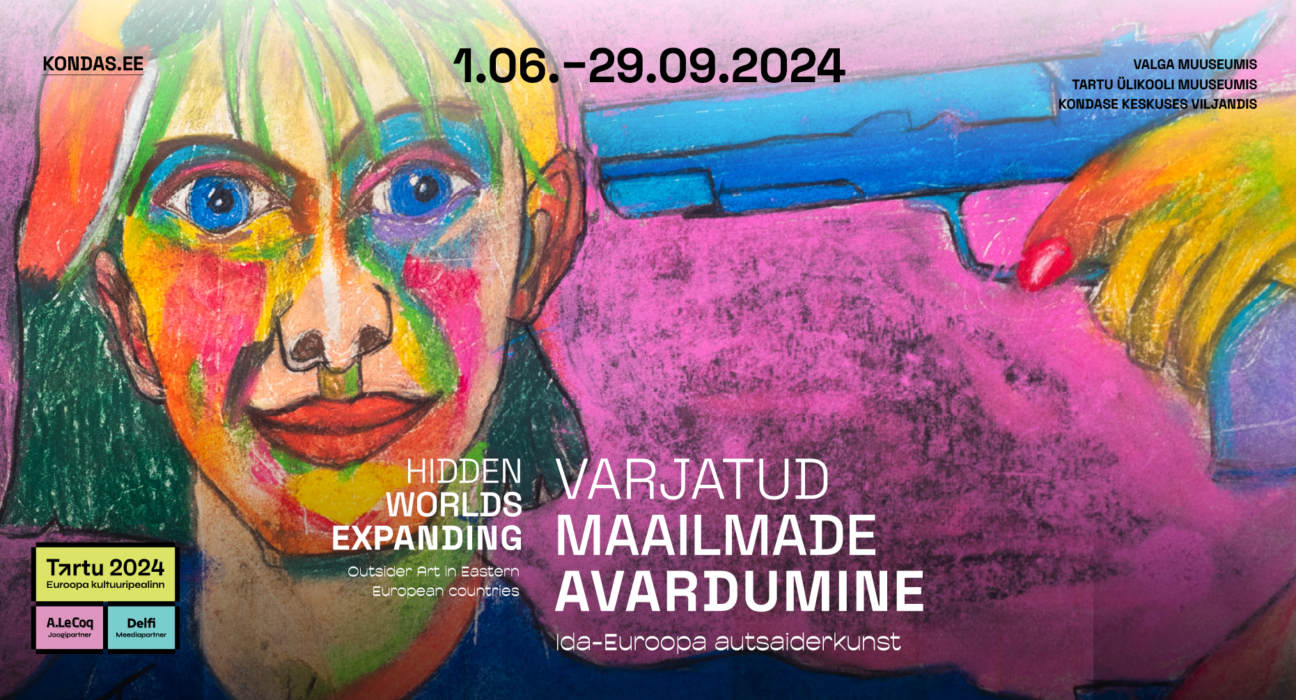The exhibition Hidden Worlds Expanding presents Outsider Art mainly created in Eastern Europe, bringing for the first time together in one exhibition exceptional works hitherto hidden from the broader public in so many countries. The exhibition displays more than 200 works from the collections of historical and contemporary Outsider Art from 10 countries by a total of 59 artists.
Mostly, it is art born in social isolation in psychiatric hospitals or special care homes. There are also works created in the course of art therapy sessions or studios under the guidance of instructors.
Outsider artworks cannot often be categorised within a particular style, distinguished geographically or placed in a specific era. They do, however, have a certain universality, lack of ambition and compromise, and a deeply felt sincerity. In some cases, art is the creator’s only means of communication with the outside world.
The exhibition Hidden Worlds Expanding takes place simultaneously in Tartu, Valga and Viljandi. Opened at the same time, these exhibitions are conceptually interrelated and form a complementary whole.
At the University of Tartu Museum, the earliest layer of the exhibition, the historical works from the late 19th and early 20th centuries are displayed. The oldest works on display come from the archives of the Psychiatry Clinic of Tartu University Hospital, but most are from the collection of psychiatric art of the Hungarian Academy of Sciences and the collection of the Silesian Museum in Katowice. The best-known authors include Edmund Monsiel (1897–1962) and the classic of Hungarian Outsider Art – Pál István (1888–1944), also known as the van Gogh of Hungary. The central part of the exhibition is devoted to the work of psychiatric patients, offering a glimpse into the Umwelts of two eccentric contemporary artists, Michael Golz (b. 1957) and Lembar Linder (b. 1973) –
the worlds in which they firmly believe and where living can be a refuge and a way out.
The exhibition at the Kondas Centre delves into the mystical origins of creativity, dealing with visionaries communicating with the universe and artists who precisely document their surroundings. The displayed works deal with the mundane everyday world and the artists’ ambitious visions. Among others, the world-renowned Outsider
Artists Anna Zemánkova (1908–1986) and Cecilie Marková (1911–1998) are
represented; the former’s works were also selected for this year’s Venice Biennale.
Valga Museum presents a houseful of portraits. The exhibition focuses on the issues of depicting oneself and another person, which is one of the central themes of (but not limited to) Outsider Art. Representing oneself and another is the best way to get to know oneself and one’s surroundings, to try to fit in or resist.
Hidden Worlds Expanding is part of the main programme of the European Capital of Culture Tartu 2024. The exhibition is accompanied by a catalogue and an educational programme.
Collections: Silesian Museum in Katowice (Poland), Kondas Centre (Estonia), private collection of Pavel Konečný and collection of Open Art Studio of Masaryk University, Brno (Czechia), collection of psychiatric art of the Hungarian Academy of Sciences (Hungary), Koprivnica City Museum (Croatia), Kettuki Ry Art Studio in Hämeenlinna(Finland), Art Cru Gallery (Germany)

